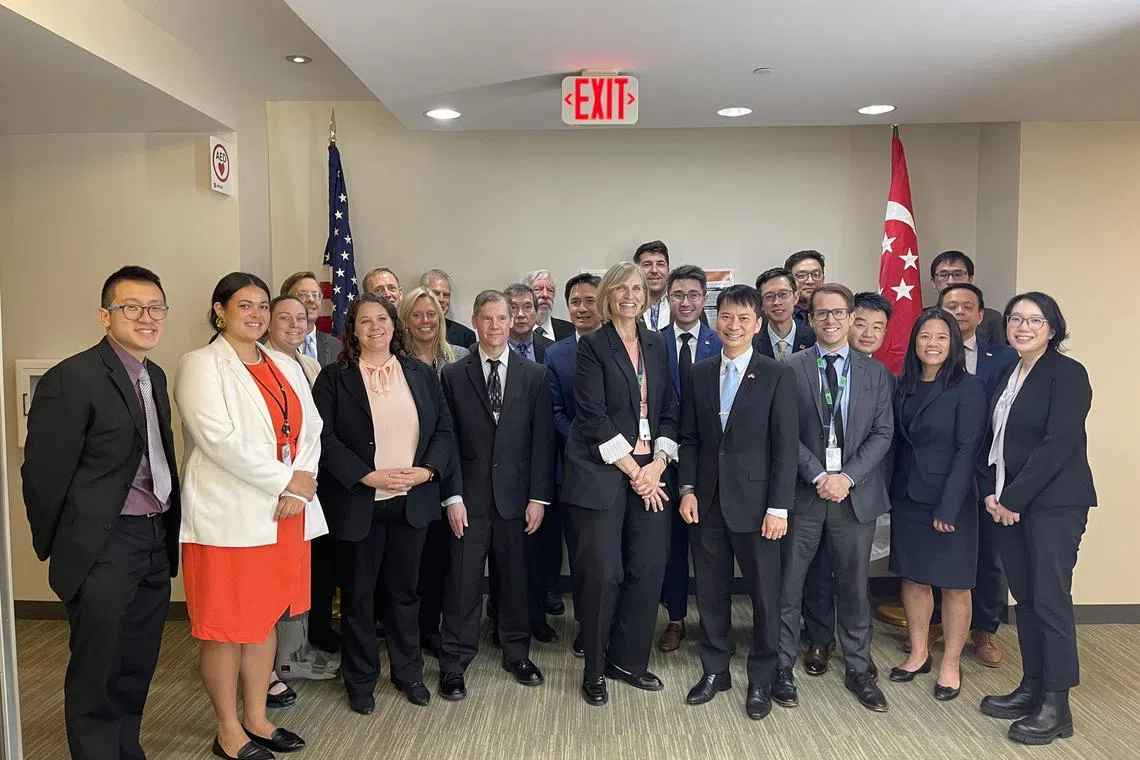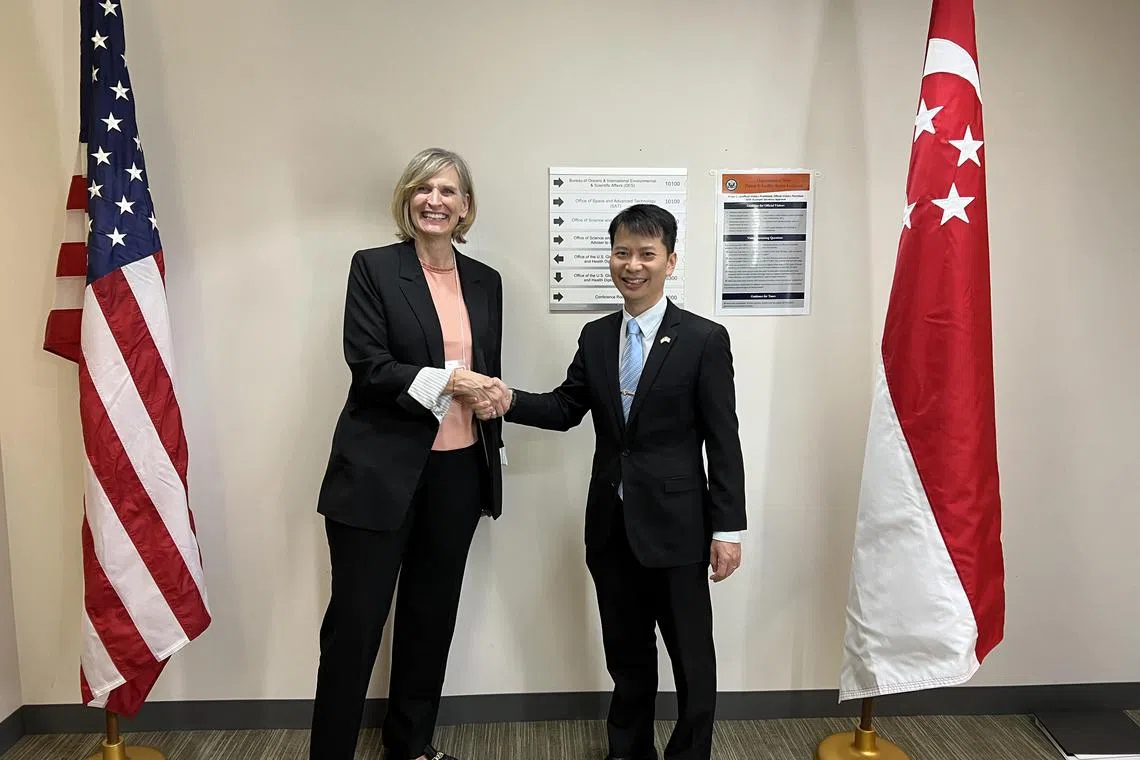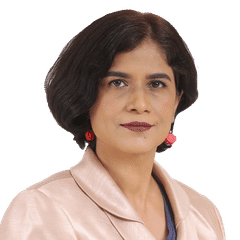Haze detection, aviation and maritime safety discussed in first S’pore-US Space Dialogue
Sign up now: Get ST's newsletters delivered to your inbox

Mr Ronald Tong (front row, in light blue tie), acting executive director of the Office for Space Technology and Industry, and Ms Valda Vikmanis-Keller (front row, next to Mr Tong), director of the State Department Office of Space Affairs, with participants of first bilateral Space Dialogue.
PHOTO: OFFICE FOR SPACE TECHNOLOGY AND INDUSTRY
Follow topic:
WASHINGTON – Singapore and the US discussed possible joint projects in haze detection and assessment, as well as the use of satellites to enhance aviation and maritime safety, in their first bilateral Space Dialogue.
The dialogue, held on Tuesday on the sidelines of Deputy Prime Minister and Finance Minister Lawrence Wong’s ongoing working visit to the United States, is a platform to beef up bilateral exchanges and cooperation in civil space matters.
“It is yet another example of the expansion of cooperation between the United States and Singapore into emerging and frontier areas,” said a joint statement released on Thursday.
The Singapore delegation was led by Mr Ronald Tong, acting executive director of the Office for Space Technology and Industry, the national space office. Ms Valda Vikmanis-Keller, director of the State Department Office of Space Affairs, led the US team.
The delegations agreed to consider possible joint projects in a range of areas, including air quality research, and fire and smoke haze detection and assessment, the statement said.
The use of satellites to better understand climate change and environmental conditions, prepare for and respond to disasters, and improve natural resource use was a priority area for cooperation, the two sides agreed.
The inaugural space dialogue also zeroed in on the maritime domain, where satellite remote sensing and communications will enhance domain awareness and connectivity.
“This will support the broad range of government and commercial interests in security, ensure the safety of life at sea, protect the environment, and promote the development of digital and decarbonisation solutions,” the statement said.
Another area of cooperation is aviation, where the provision of safe and efficient air traffic management can be enhanced with satellite voice and data communications over oceanic and remote areas.
Satellite data communications will become increasingly important for future aviation concepts of operations, the statement noted.
Singapore is a relative newcomer in space research, with the nation’s first indigenously developed satellite, the X-SAT, launched in 2011. More than 30 satellites for research and development, and commercial and government use have been launched since then.
The National University of Singapore and Nanyang Technological University, which have research centres on satellite engineering and remote sensing, are part of the nation’s growing space ecosystem.

Ms Valda Vikmanis-Keller, director of the State Department Office of Space Affairs, and Mr Ronald Tong, acting executive director of the Office for Space Technology and Industry, Singapore’s space office.
PHOTO: OFFICE FOR SPACE TECHNOLOGY AND INDUSTRY
The Agency for Science, Technology and Research also has a satellite cluster within its Institute for Infocomm Research, focusing on R&D in satellite communications and satellite data analytics.
During Tuesday’s dialogue, both countries also reviewed joint efforts to promote the sustainability of the outer space environment and the importance of dealing with the growing problem of orbital debris.
The dialogue between the governments was followed by a commercial discussion where over 20 private space companies and research institutions from each country participated.


